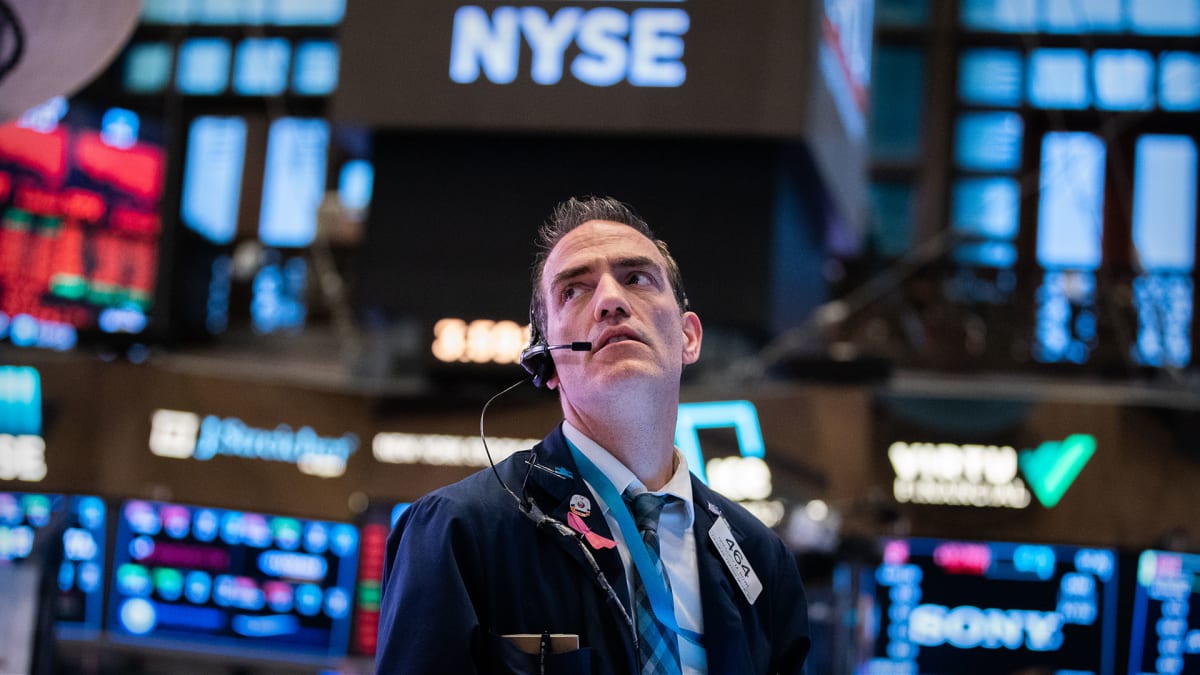
Stocks finished higher Wednesday, while the dollar and Treasury bond yields eased, as investors eyed jobs data and reacted to the release of Fed minutes amid rising market volatility levels paired with thin trading volumes.
Stocks ended lower Tuesday, however, and look vulnerable to a similar pattern today, with daily trading volumes below typical averages in the holiday-shortened week and investors taking early cues from movements in the U.S. dollar .
The CBOE's VIX volatility gauge, meanwhile, jumped 6% in the overnight session to 23.00 points, suggesting daily moves for the S&P 500 of around 57 points over the next 30 days, the highest since mid-December, before easing to around 22.34 points in the New York session..
Benchmark 10-year Treasury note yields were marked lower and trading at 3.685% while the U.S. dollar index, which tracks the greenback against a basket of six global currencies, gave back around 0.24% to change hands at 104.27.
On Wall Street, traders are likely to focus on the release of minutes from the Fed's December policy meeting, slated for 2:00 pm Eastern time, as well as JOLTS jobs data at 10:00 am Eastern, which showed that a larger-than-expected 10.45 million open positions went unfilled over the month of November.
Those figures could feed into expectations for Friday's December payroll report, as well as bets on the Fed's next month in February, where traders are pricing in a 70.2% chance of a 25 basis point rate hike.
Investors are likely to focus on any split among policymakers with respect to future hikes amid one of the most aggressive tightening paths on record from the Fed, which raised its benchmark interest rate for the seventh time in 2022 when it last met on December 14, taking it to a range of between 4.25% to 4.5%, the highest since 2008, and said ongoing be needed in order to combat the fastest inflation in nearly four decades.
The so-called 'Dot Plots', which illustrate the views of the Fed's eighteen member rate-setting committee, indicated a terminal Fed Funds rate of around 5.1% by the spring, a level that it plans to hold until the end of the year.
Data since then, however, has suggested weakness in the overall economy, while inflation continues to slow, and bond markets have been testing the Fed's hawkish view for more than a month, with benchmark 2-year notes trading at 4.347%, well below the terminal rate projected by the December dots.
Minutes showed the Fed acknowledged the "significant" progress it had made in fighting inflation thus far, but emphasized the need to "retain flexibility and optionality when moving policy to a more restrictive stance', suggest smaller, and potentially a slower pace of rate hikes going forward.
The Dow Jones Industrial Average finished up 133 points, or 0.40%, to 33,269, while the S&P 500 gained 0.75% and the tech-focused Nasdaq advanced 0.69%.
Microsoft (MSFT) shares ended down 4.4% to $229.10 each, after analysts at UBS lowered their rating on the tech giant, citing weakness in its flagship cloud division.
Apple (AAPL), meanwhile, rebounded 1% -- after closing below the $2 trillion market value threshold for the first time in nearly two years -- as Wedbush analyst Dan Ives cautions that demand headwinds could challenge the stock's near-term growth prospects.
Salesforce (CRM) shares jumped 3.6% after the enterprise software group unveiled plans to cut around 10% of its global workforce amid a restructuring strategy under stand-alone CEO Marc Benioff.
Overnight trading was broadly solid, with the Asia's MSCI ex-Japan index rising 1.69% into the close of trading and Europe's Stoxx 600 getting a boost from softer-than-expected inflation data from France and an improved reading for economic activity around the region in the form of final PMI data from S&P Global.







